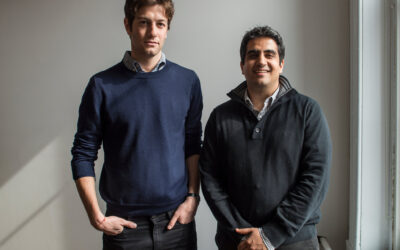Right about now you may be hunting for that Chinese philosopher who exalted the virtues of living in interesting times. Who was that guy, and what the hell was he thinking? There’s little doubt that we have found ourselves at that proverbial moment, but the jury’s out on whether it’s a blessing or a curse.
Well, waste no more time speculating. I assure you that for those of us who search for transformational investments, our global supply chain stewards are a target-rich environment. Advances in technology, historic changes in consumer behavior, unabated globalization, and our growing appreciation for the power of information portend historic opportunities for private equity investors who take the time to understand how logistics networks operate. Radical change is happening in full view of calcified stakeholders who are burdened by decades of “legacy think” and stranded infrastructure. They are unable to respond with compelling solutions, giving nimble innovators and savvy investors an open field.
Here is how to get started. First, don’t limit your view of logistics to trucking, shipping, and warehousing. Sure, those are subsets, but logistics is the science of “flow”. It is a heady combination of physics, technology, politics, math, and a sprinkling of sociology. If you think otherwise, you will miss the most meaningful opportunities. Logistics is the flow of any hosted asset (people, packages, electrons, data, etc.) within a network or infrastructure designed to facilitate that flow. Don’t make it more complicated. It’s that simple. When we look through this lens the opportunities quickly become apparent.
Second, build industry relationships so diligence can be swift and meaningful. It has taken me thirty years to discover this simplicity, but resulting insights have produced 3x returns. The realization that we can now move more assets with less infrastructure, produce greater supply chain visibility, more control, enjoy better predictability and sustainability came just in time. Ever since Columbus sailed the trade winds, goods movement has been slow to evolve and shockingly inefficient. The flow of assets is rapidly being optimized, as machine learning, IOT, mobile sensing and data analytics are being applied to every imaginable network.
Third, understand that changing behavior is hard and takes time. Only 60 years ago (1956), Malcom McLean revolutionized the goods movement by introducing the shipping container, a game changing efficiency. Despite its compelling business case, recalcitrant stakeholders resisted. Ultimately containerization was adopted, leading to greatly accelerated industrial globalization. While ships have gotten bigger and supply chains have gotten longer, little else has changed until now. As an example, of the 40 million containers now in use, fewer than 200,000 are “smart”. Other industries have embraced digitization while the freight ecosystem is just beginning that journey.
It is easy to see how COVID-19 is the catalyst for transformation of our global supply chains. We have already begun to reduce dependence on Chinese manufacturing. “Off-shore” production has morphed to “on-shore” and “near-shore” as supply chains shorten to make them more responsive to consumer demand. The labor differential that gave rise to off-shore manufacturing has narrowed, and the ability to adjust quantities or redesign products quickly has become a priority.
The science of “flow” begins with knowing where each hosted asset is at any point in time. Our ability to track billions of assets moving through hundreds of networks needs massive computing power, a relatively recent condition. Each asset needs to communicate. Where am I? Where am I going? Who owns me? How heavy am I? What’s my temperature? And hundreds of other data points that might be relevant to network stakeholders. Communication devices now cost pennies and are as small as a postage stamp. 5G will exponentially expand our ability to capture this data and curate it in a usable form. But the holy grail of “flow” is being able to instantly make sense of all this data.
Our goal, with the right technology platform, is to find unproductive patterns of network behavior and apply machine learning powered tools to respond with solutions in real time. Innovative applications like Waze constantly reroute your travel based on thousands of inputs per second, making your time more efficient and maximizing the use of network infrastructure like roads, bridges, and cars. The unprecedented investment opportunity is in the thousands of analytical tools that are being deployed to diagnose and cure the ills of an antiquated global nervous system.
Industrial transformation always needs a “crisis” to redirect legacy momentum. COVID-19 was the logistician’s 9/11 and exposed just how vulnerable our supply chains are and how devastating their failure can be. While COVID-19 may have been a catalyst, transformation won’t end with vaccines. Our daily lives are forever changed. How will travel be impacted by the mass adoption of teleconferencing? On-line retail sales will settle in at a multiple of pre-COVID levels, shocking our distribution infrastructure that was designed for an in-person experience. In years to come we will refer to logistics as BC (Before COVID) and AC (After COVID).
Investors need to be bold — for surely we will look back at this moment as a real tipping point. Logistics and the Science of Flow will change more in the next 10 years than in the previous 100. Success is not accidental, and commitment to this category should not be casual. Investors should be “all in” or stay home. While the opportunities today are spectacular, a rapidly shifting landscape increases the odds of being wrong.
Mr. Rosenthal joined Saybrook shortly after its inception in 1990. He brings 29 years of logistics experience in complex transactions as an advisor, operator, and investor on behalf of financial institutions, bondholders, investors and his own account in public and private enterprises. While head of Saybrook’s Advisory Group, Mr. Rosenthal led some of the largest transformations in history, including Pacific Gas and Electric Company and United Airlines. Prior to joining Saybrook in 1990, he founded and served as Chairman and CEO of NetAir International Corporation, which became the nation’s largest non-scheduled certificated carrier. Mr. Rosenthal serves on the boards of Esri Saybrook Partners, LLC, Taylored Services, Global Infrastructure Solutions, Total Transportation Services, and Harbor Performance Enhancement Centers. He chairs the USC Center for Global Supply Chain Management and chairs the U.S. Department of Infrastructure Finance Sub-Committee.
Can’t stop reading? Read more
US Pipeline Operator ONEOK Inks Two Deals for $5.9 Billion
US pipeline operator ONEOK Inc. agreed to buy a Permian Basin rival and a controlling stake in...
Blackstone Is Said to Seek A$5.5 Billion Loan for AirTrunk Bid
Private equity firm Blackstone Inc. is in discussions with banks for a five-year loan of about...
Thrive Capital to lead multi-billion dollar OpenAI investment round at $100bn valuation
OpenAI, the company behind the popular AI tool ChatGPT, is in advanced talks to secure several...




